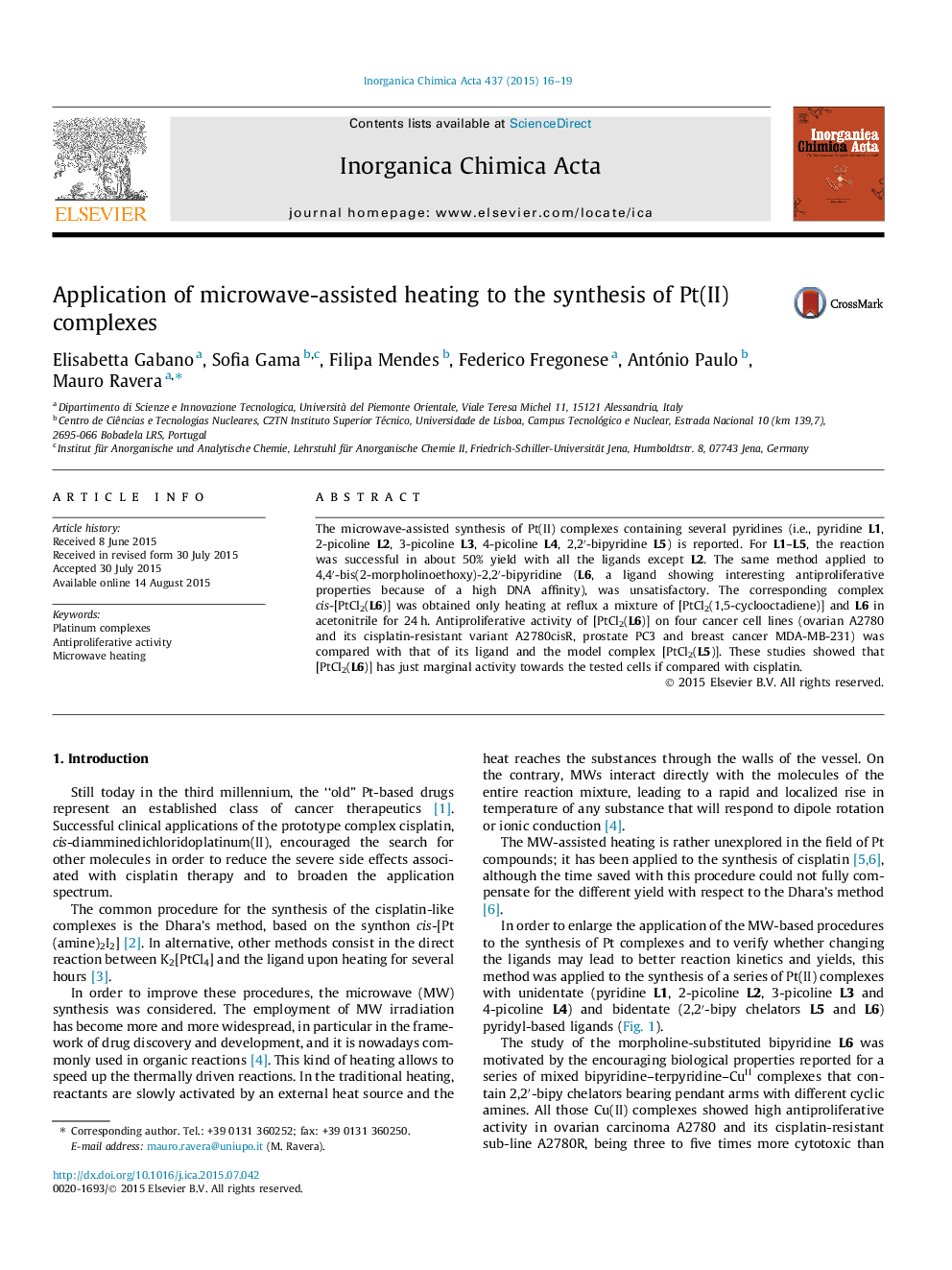| Article ID | Journal | Published Year | Pages | File Type |
|---|---|---|---|---|
| 1308783 | Inorganica Chimica Acta | 2015 | 4 Pages |
•The [PtCl2(4,4′-bis(2-morpholinoethoxy)-2,2′-bipyridine)] complex (6) is reported.•Microwave heating is used for the synthesis of Pt–pyridines complexes, but 6.•Complex 6 is obtained by using [PtCl2(1,5-cyclooctadiene)].•A limited antiproliferative activity of 6 on four cancer cell lines is observed.
The microwave-assisted synthesis of Pt(II) complexes containing several pyridines (i.e., pyridine L1, 2-picoline L2, 3-picoline L3, 4-picoline L4, 2,2′-bipyridine L5) is reported. For L1–L5, the reaction was successful in about 50% yield with all the ligands except L2. The same method applied to 4,4′-bis(2-morpholinoethoxy)-2,2′-bipyridine (L6, a ligand showing interesting antiproliferative properties because of a high DNA affinity), was unsatisfactory. The corresponding complex cis-[PtCl2(L6)] was obtained only heating at reflux a mixture of [PtCl2(1,5-cyclooctadiene)] and L6 in acetonitrile for 24 h. Antiproliferative activity of [PtCl2(L6)] on four cancer cell lines (ovarian A2780 and its cisplatin-resistant variant A2780cisR, prostate PC3 and breast cancer MDA-MB-231) was compared with that of its ligand and the model complex [PtCl2(L5)]. These studies showed that [PtCl2(L6)] has just marginal activity towards the tested cells if compared with cisplatin.
Graphical abstractThe microwave heating for the synthesis of Pt(II) complexes containing chelating and not chelating pyridines is described. The optimized conditions were unsuccessfully applied to obtain a cisplatin-like complex with 4,4′-bis(2-morpholinoethoxy)-2,2′-bipyridine, a ligand that showed an important DNA binding affinity. This complex was finally obtained by using [PtCl2(1,5-cyclooctadiene)] and its antiproliferative activity on four cancer cell lines is reported.Figure optionsDownload full-size imageDownload as PowerPoint slide
